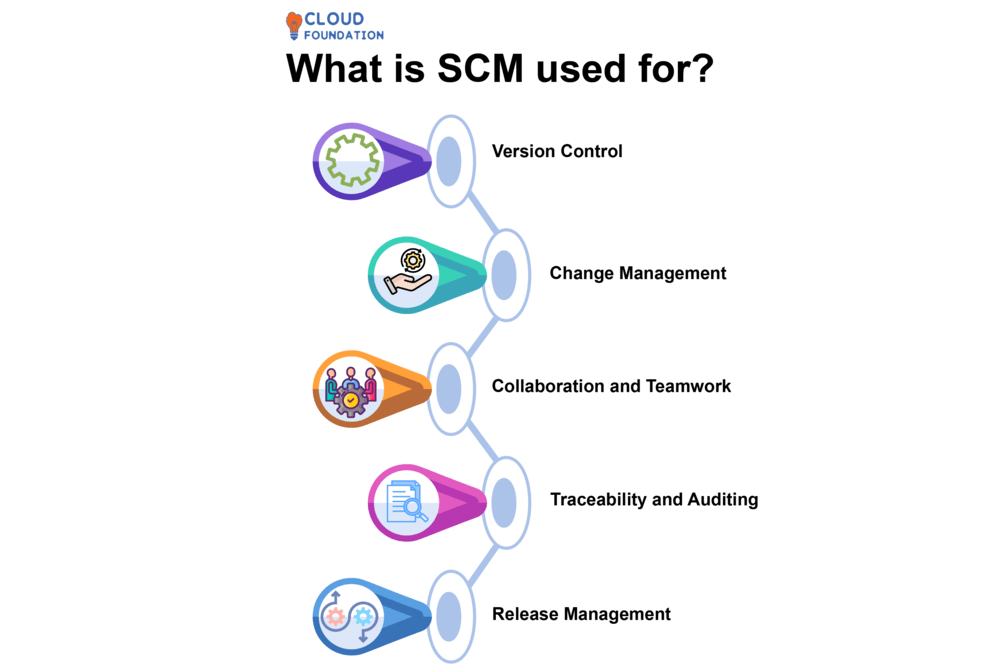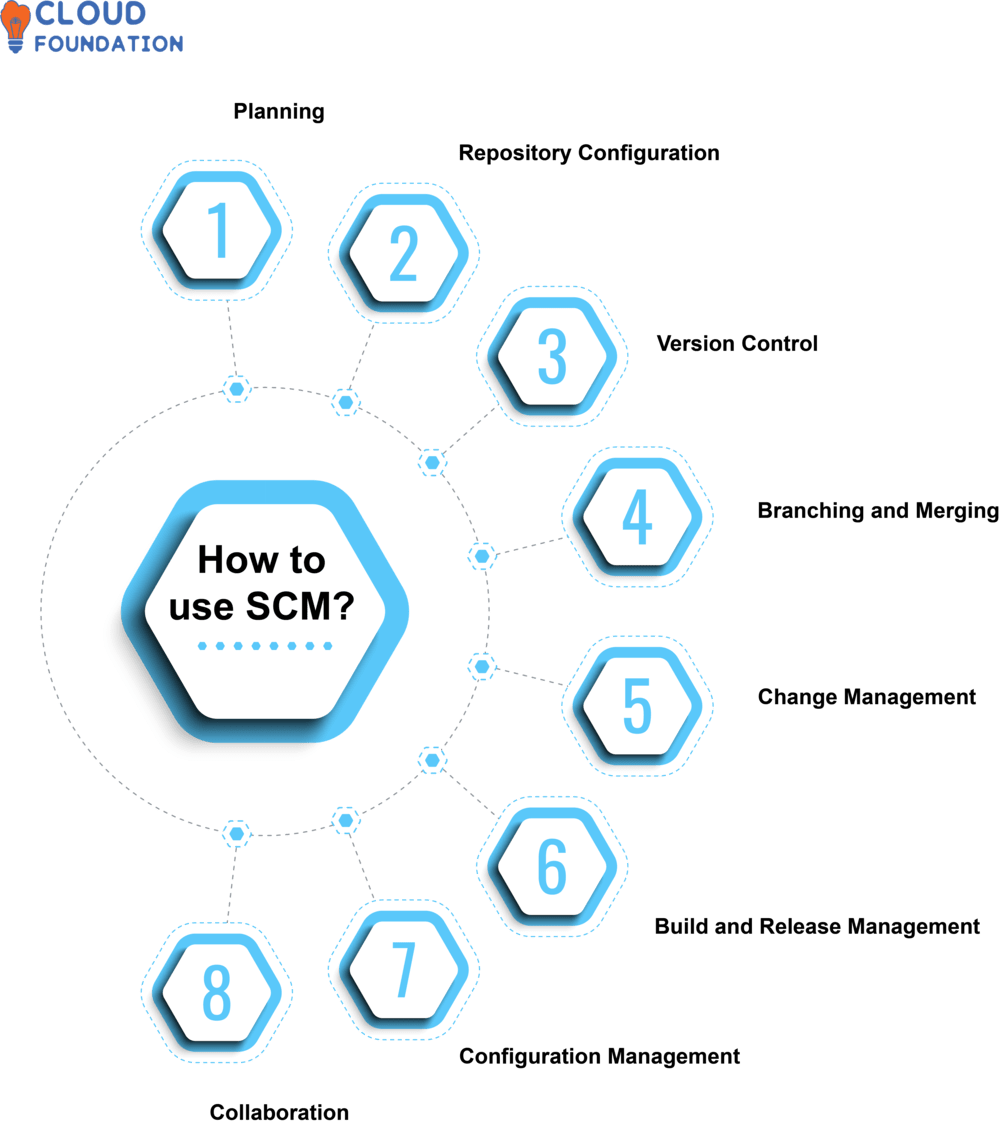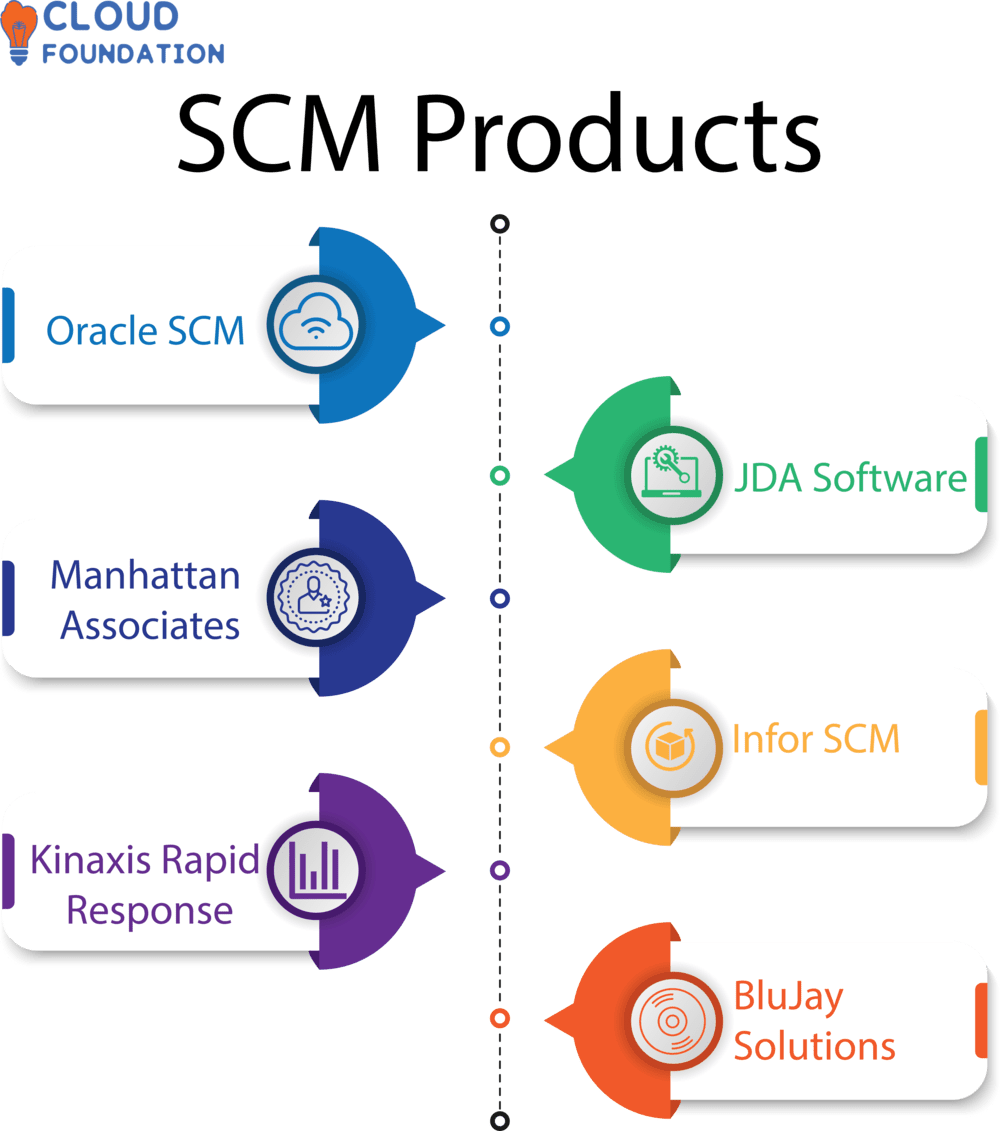What is SCM?
Have you thought before that “why we need to learn new technologies daily and be updated to this techie world”, because you can make your graph curve to stand a head and also you can predict changes and plan ahead of time to adjust to them.
Overview of SCM, Introduction to SCM
An introduction to SCM illustrates its significance: companies would struggle without SCM to effectively optimize their supply chains operations resulting in higher product costs, decreased customer satisfaction levels and diminished profits.
As competition and customer demand has increased, SCM has become more vital than ever in today’s corporate scene. Technological innovations have revolutionized this field, making complex supply chain networks simpler and easier to oversee than before.
Companies using SCM systems effectively can save time, money, and resources while streamlining SCM processes and creating competitive advantages for themselves.
What is SCM (Supply Chain Management)?
SCM encompasses everything between initial acquisition of raw materials and delivery to consumers. Through efficient procedures, decreased expenses and enhanced customer satisfaction measures, SCM seeks to maximise supply chain efficiency and effectiveness.
Logistics encompasses numerous processes, from purchasing goods, planning manufacturing operations, tracking inventory levels and transporting them directly to customers.
SCM relies heavily on strong coordination and communication among suppliers, manufacturers, distributors, retailers, consumers and service providers in order to guarantee an uninterrupted flow of goods and information.
SCM Definition
SCM stands for Supply Chain Management and involves overseeing all operations along a company’s supply chain from raw material acquisition through finished goods delivery. SCM encompasses planning, procurement, production management inventory control storage transportation customer service as part of this practice.
Supply chain management ensures commodities arrive promptly, in perfect condition, and at an economical cost.
What does SCM do and what is SCM used for?
Supply chain management (SCM) refers to the practice of controlling the flow of goods, services, information and funds between all elements within a supply chain – suppliers, manufacturers, warehouses logistics service providers retailers etc – known as its components or phases (for instance suppliers manufacturers warehouse logistics suppliers’ manufacturers warehouse logistic providers logisticians retailers etc).
Contributes to improving efficiency and cost-efficiency throughout each level of a supply chain as well as on time delivery of goods or services.

SCM involves forecasting product demand, managing stock levels and planning the movement of goods and information through the supply chain in an effective and timely fashion – this may help lower costs while improving customer satisfaction.
SCM helps software teams maintain control over the process by tracking changes effectively while guaranteeing their products remain correct and consistent over time.
Here are a few specific advantages and uses for SCM that you should know:

Version Control: With its version control feature, SCM helps keep track of different versions of software artefacts such as source code, papers and settings at any one time while keeping track of changes over time.
Workers working together simultaneously on multiple versions is made easy through collaboration allowing workers to work simultaneously while keeping a record of changes over time.
Change Management:(SCM) enables organizations to efficiently monitor and oversee changes made to software artefacts such as source code changes, bug fixes, new features or modifications in how the software operates.
SCM keeps an overview of any modifications to artefacts such as source code or bug fixes or even in how software operates itself.
Tracking changes made within teams allows everyone to stay informed as to who, when, and why changes occur – this information can also help teams identify who is accountable for certain areas. It ensures everyone works cohesively together effectively.
Collaboration and Teamwork:while supporting team collaboration through tools like branches and merging.
Developers can work independently on different parts of a codebase and then combine their changes back into the main script without disrupting it.
This enables multiple individuals to work simultaneously on one project while exploring, adding features or fixing bugs without disrupting or impacting on its main structure.
Traceability and Auditing: SCM keeps an audit trail of changes and versions made to software so writers can refer back to specific ones, analyze its evolution over time, and understand where issues may lie.
Furthermore, tracking helps with compliance by keeping records of any modifications made to a program’s codebase.
Release Management:SCM software plays a central role in how software versions are controlled, from creating release samples and packaging software artifacts, through to making sure only components with relevant versions are included in each release.
SCM also assists in managing dependencies, setting release parameters, and overseeing rollout processes.
How does SCM Works
Optimizing operations involves improving procurement, manufacturing, inventory control, logistics management, transportation services, customer care services and sales activities.
SCM strives to establish an efficient supply chain which produces top quality goods at lower costs while satisfying customers.
SCM requires collaboration among various parties involved, including suppliers, manufacturers, distributors and retailers. Organisations often utilise SCM to monitor demand patterns as well as manage operations and inventories more effectively.
SCM may assist organizations with improving efficiency and responsiveness while strategically planning for and procuring products or services.
Why SCM and what are the benefits of SCM?
Supply chain agility allows companies to quickly adapt to shifting market conditions and provide improved service for clients.
SCM allows firms to reduce expenses, boost productivity and please customers more than ever before.
Furthermore, SCM helps forge strong partnerships between themselves and their suppliers for mutual advantage.

Increased Visibility and Control: By employing software to oversee all phases of supply chain process management, greater visibility and control are attained over its entirety.
Better Inventory Control: Eliminating extra stock and making sure customers never run out will result in lower overall costs thanks to better inventory control.
Faster Order Fulfilment:Order Fulfilment Speed-ups and Lower Operating Costs-Both are achieved when all activities and information are integrated – this leads to faster order fulfilment times with reduced wait times because better decisions can be made more efficiently
Lower costs:faster order fulfilment, fewer errors committed during order fulfilment, and lower operating costs for operations overall.
Superior customer service: By understanding more of their customers and the products available to them, companies can more quickly reply to customer orders for products ordered – leading to improved customer service and satisfaction levels for everyone involved.
Reduce Time-to-Market: Reducing time-to-market can occur when all members in the supply chain communicate and work more collaboratively to reduce waste and loss in production and distribution chains.
Advantages of SCM
Supply Chain Management has numerous benefits for businesses of various fields in various ways; here are a few key advantages of SCM that you may wish to keep in mind:

Enhance customer service: SCM emphasizes timely deliveries and correct orders as key aspects of satisfying customers. SCM enhances customer happiness by making sure goods arrive when and where needed.
Selling, creating, coordinating and working together easier enables sellers, makers, distributors and stores alike to provide better customer service.
Inventory Optimization: Supply chain management (SCM) helps companies find a balance between supply and demand that allows for the optimal number of items in stock.
Companies using demand forecasting techniques, inventory management tools and joint planning processes can cut back their stock while still meeting customer demands – creating lower moving costs, less items going out-of-style faster and greater cash flow.
Supplier Relationship Management: is about cultivating healthy partnerships between businesses and suppliers, to establish reliable deliveries on time at competitive rates with increased product quality as well as gain access to innovative new technologies or markets by forging strategic alliances.
Successful supplier relationship management within SCM gives any business the competitive edge needed for long-term survival, as it ensures its suppliers receive timely payment for services rendered.
Flexibility and adaptability: Supply chain management (SCM) allows companies to react swiftly to shifts in market demands or customer preferences quickly enough for sustained business operations.
Companies can quickly adjust operations using agile supply chain practices like output on demand, dynamic routing and flexible inventory management.
Organisations need the agility to adapt quickly to changes, take advantage of emerging opportunities, and remain ahead of competitors.
Sustainability and Social Responsibility:SCM plays a pivotal role in furthering sustainability and social responsibility initiatives.
Environmental impact monitoring provides companies with a powerful way to track and reduce waste while finding more cost-efficient shipping methods, and uphold ethical sourcing practices.
By adopting sustainable practices into their supply lines, businesses can enhance brand image, meet legal obligations and address customer worries more efficiently.
What is SCM software and how to use SCM?
Here, SCM software is referred to use in SCM .This term encompasses any collection of practices, methods or tools utilized for controlling software development projects.
SCM software aims to facilitate and automate the lifecycle management of software configuration elements (including source code, documentation and associated assets) via their life cycle management processes.
SCM serves several key objectives. First and foremost is assuring integrity and traceability of software artifacts; permitting team member cooperation; encouraging parallel development efforts; providing reliable audit trails of changes made over time; as well as offering reliable historical records on modifications.

Planning: is required in order to effectively utilize SCM software: * Establish the software configuration elements you plan to manage (source code, documentation and artefacts). Also set forth your development workflow process.
Repository Configuration: Establish a central repository to house all software artefacts and collaborate on. A repository serves as both version control system and collaboration hub.
Version Control: Developers use version control software such as Subversion to access files from a repository and make local modifications before checking back into it later on
Branching and Merging: SCM software enables the construction of several distinct development paths, or branches. Branches may be useful when conducting parallel development efforts or correcting problems as well as testing experimental features or features that don’t yet exist – all examples for when SCM should be utilized effectively in enterprise settings.
Once work in a branch has been completed, its modifications can be integrated back into the main codebase.
Change Management: SCM software offers tools that monitor and control modifications made to software artefacts.
Common features for collaborative environments and tracking include change requests, bug tracking and task management – providing essential features to streamline collaboration and provide accountability for tasks completed by individuals or teams.
Build and Release Management:SCM tools integrate with build tools to automate compilation, testing, packaging and deployment of software for deployment. They ensure that only relevant source files are used when building releases.
Configuration Management:SCM software helps manage various software configurations, making it possible to define and sustain multiple product versions or variants.
Collaboration: SCM software supports team collaboration by offering features like code evaluations, comments and notifications.
Facilitates effective communication and teamwork within the development team.
SAP SCM Products

Oracle SCM: Oracle offers several tools designed to assist with purchasing, order management, manufacturing, shipping management and global trade management. Their SCM services include Supply Chain Planning, Transportation Management and Order Management – among many others.
JDA Software: JDA Software has long been considered one of the premier end-to-end supply chain and retail systems available, now part of Blue Yonder. They specialize in demand planning, inventory optimisation, warehouse management and delivery management tools to keep businesses operating at optimal performance levels.
Manhattan Associates: Manhattan Associates offer supply chain and omnichannel business options that assist companies with order management, warehouse storage needs, shipping needs, as well as orders that need to be sent out across various regions. Their products help facilitate these tasks successfully.
Infor SCM: Infor provides various supply chain management options, such as planning for demand, overseeing goods management, warehouse operations management and transportation logistics management. Their products aim to increase visibility and teamwork while streamlining supply chain processes more smoothly.
Kinaxis Rapid Response: Kinaxis offers Rapid Response as a cloud-based tool that facilitates planning and response management throughout your supply chain from start to finish.
Companies benefit by increasing supply chain awareness, planning demand for supply, managing their inventory effectively and filling orders efficiently.
BluJay Solutions: BluJay Solutions provides supply chain software options such as transportation management, warehouse management, global trade management and supply chain visibility that aim to strengthen supply chain collaboration and logistics& SCM operations. Their products aim to foster supply chain partnership.

Saniya
Author
“Life Is An Experiment In Which You May Fail Or Succeed. Explore More, Expect Least.”
